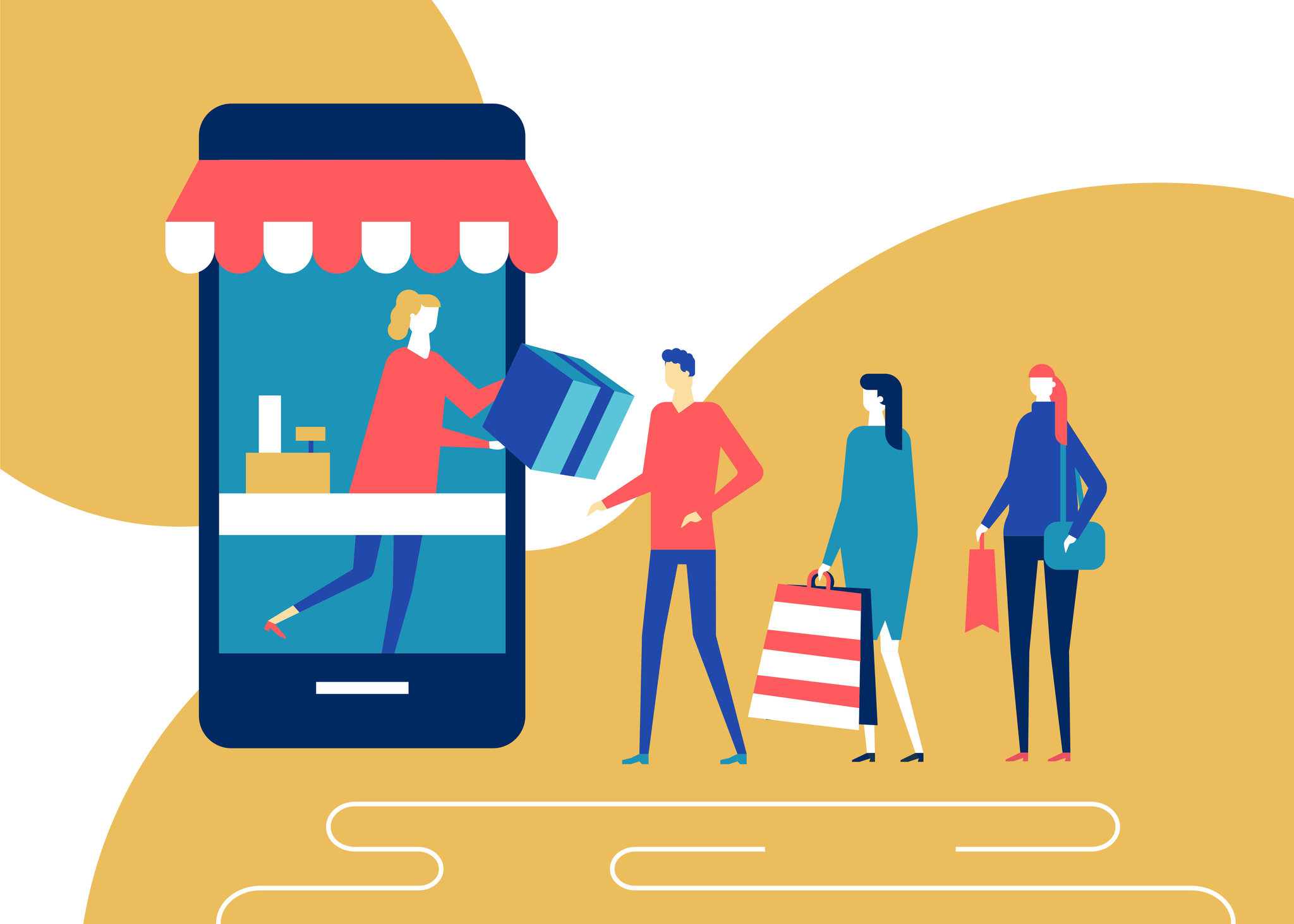By Vanessa Loughty | June 22, 2023

See why top ecommerce brands use Miva’s no-code platform to run
multiple stores, manage massive catalogs, and grow their revenue.
In this blog, we’ll look at what makes a successful Buy Online, Pick-up In Store (BOPIS ecommerce) program, and then take broader lessons from BOPIS retail to explore the benefits of adapting the online shopping experience to the specialized preferences of customers.
BOPIS, or Buy Online, Pick-up In Store, is a sales model that allows customers to purchase products online through an ecommerce store, and then arrange to pick up items in a physical store, at a designated pickup location, and sometimes to have items brought to the customer’s vehicle directly. Curbside pickup programs actually date back to restaurants in the 1950s, when it became popular for suburban shoppers with cars to have food brought out to be eaten “curbside” in their vehicles. Modern BOPIS retail which is integrated with sophisticated ecommerce operations began to gain traction with mainstream shoppers in the late 2010s via grocery stores' online order/curbside pickup programs. The service experienced a dramatic increase in popularity during the COVID era, driving global BOPIS revenue to 244 billion dollars in 2021, with projections of 700 billion in BOPIS business within a few years. “BORIS” is a similar program which allows shoppers to Buy Online, Return In Store.
This form of hybrid shopping is so popular because bridges the gap between online and physical shopping experiences, offering customers the convenience of digital purchasing while eliminating the wait time, hassle, and costs associated with other forms of delivery.
Customers aren’t the only ones who benefit from BOPIS convenience programs. This type of fulfillment also has advantages for sellers, who are able to capture more sales by serving a unique buyer preference. Implementing some form of BOPIS also helps merchants cut costs, get a better handle on inventory control, and create all new marketing and upselling opportunities.
Meeting customer preferences: BOPIS is wildly popular all over the world, with 70% of surveyed 2022 shoppers saying they had already used some form of BOPIS ecommerce or BOPIS retail.
Last minute and impulse purchases: Shoppers who enter a store often make additional purchases. This is an excellent way to increase the AOV of online orders. We looked at more ways to increase AOV here.
Lower fulfillment costs and shipment complexity: Sellers who are set up to let their ecommerce customers pick up goods can reduce their fulfillment infrastructure, with less resources required to deliver goods. The real-time inventory management which is essential for BOPIS also makes inventory needs in general more accurate and easier to predict. Learn more about effective inventory management here.
More ways to upsell: Businesses which offer BOPIS suddenly have many more natural opportunities to communicate with shoppers, such as text alerts and email order updates. Each of these are chances for merchants to promote and upsell additional products.
Not all ecommerce merchants have physical stores, but the underlying principle—customizing the buying experience to your specific customer audience—is something all online businesses can adopt. By tapping into the buying habits and needs of their customers, merchants can optimize their services to provide a more satisfying, more efficient shopping experience. We looked at ways to build customer profiles here. With more online shopping options than ever, personalization also can be the differentiator that sets a business apart from competition. Here are some ways businesses can create a more personalized ecommerce experience:
Tailored promotions and communication: Modern ecommerce platforms allow merchants to offer different promotional content, product selections/recommendations, pricing, and other terms based upon a customer’s profile or preferences. This includes personalized emails or notifications about products, offers, or updates that are most relevant.
Relevant shopping tools: A strong way to personalize an ecommerce website is by adapting product offerings, ordering modes, pricing and price quoting, and other core ecommerce services to the specific channel, group, or individual customer.
Customer and account data: By creating customer accounts, using credit card wallets, and tracking browsing/purchase history, stores can remember and incorporate customer preferences into the shopping experience they receive. This extends to methods for simplifying the shopping experience for repeat customers by auto-populating order, payment, or delivery details.
Price groups: Pricing can be personalized for shoppers or groups of shoppers based on any number of criteria, including pre-negotiated terms. Price quotes are very effective personalization tools—we wrote about them here.
Customizable products: Offering customizable or build-your-own products, as well as custom bundles which a user selects, can provide a uniquely relevant, personal, and efficient shopping experience.
As we've seen with the popularity of BOPIS ecommerce programs, a personalized buying experience can directly translate into revenue growth. By aligning services like BOPIS retail or curbside pickup with customers' preferences, businesses can increase conversion rates and encourage higher order values, all while reducing the cost and complexity of fulfillment, shipping, and inventory management. It’s valuable to look at all of these benefits as the result of increased shopping experience personalization. Even if a business does not have a physical location for pick-ups, there are many ways to fine tune the details of a shopping experience to serve specific customers, groups, or shopping trends. By understanding their customers and tailoring the shopping experience accordingly, businesses can unlock significant growth.


Katy Ellquist, Miva’s Digital Marketing Strategist, is an accomplished writer, marketer, and social media analyst who has created sophisticated content campaigns for a broad range of professional clients. She brings to Miva a complex understanding of ecommerce trends and techniques, building upon extensive digital agency experience and a prior role as direct liaison to Miva’s top accounts. Katy is a regular contributor to the Miva blog, covering essential ecommerce topics like design & development strategy, site optimization, and omnichannel selling, with the goal of increasing the actionable knowledgebase of the entire Miva community.
Love it? Share it!
No worries, download the PDF version now and enjoy your reading later...
Download PDF Vanessa Loughty